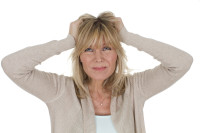
Background Information
DSM 5 is published by the American Psychiatric Association (APA). Like all previous editions of the Diagnostic and Statistical Manual, it contains a more or less comprehensive list of general definitions and detailed criteria for a broad range of conditions that have a harmful impact on human mental health. The Diagnostic and Statistical Manual is not a static document. Committees within the APA continually review the manual and check its contents against the most recent findings in mental health research and real-world medical practice. When these committees feel that there are important discrepancies between the contents of the Diagnostic and Statistical Manual and the state of medical and research knowledge, they recommend changes that can significantly alter the diagnostic information contained in the manual’s future editions. The previous edition of the DSM (DSM IV) placed obsessive-compulsive disorder with a group of conditions called anxiety disorders. These conditions are linked together because they all feature the presence of excessive levels of fear, worry or dread that overwhelm the coping mechanisms of affected individuals. However, between the release of DSM IV and the finalization of DSM 5, the American Psychiatric Association committee responsible for reviewing the anxiety disorders category determined that OCD is not primarily anxiety-based. Instead, current scientific evidence supports its placement as a unique condition separate from anxiety disorders. Current evidence also links a number of other conditions to the same general obsession- or compulsion-related behaviors found in OCD. For these reasons, the APA created the obsessive-compulsive and related disorders category for DSM 5. The other main conditions in this category are trichotillomania (hair-pulling disorder), body dysmorphic disorder, hoarding disorder and excoriation (skin-picking) disorder.
Substance/Medication-Induced Obsessive-Compulsive and Related Disorder
Substance/medication-induced obsessive-compulsive and related disorder is the DSM 5 equivalent of a condition contained in DSM IV called substance-induced anxiety disorder. The APA created this new condition as part of the larger reorganization of the anxiety disorders category and the establishment of the obsessive-compulsive and related disorders category. People affected by the disorder have symptoms that strongly or identically resemble those associated with OCD, trichotillomania (hair-pulling disorder), excoriation (skin-picking) disorder, hoarding disorder or body dysmorphic disorder. However, these symptoms appear during active use of a medication or legal or illegal substance, during the withdrawal period that follows active use of a medication or legal or illegal substance, or within a 30-day period following active use or withdrawal. Doctors can also diagnose the condition in any other circumstances where it’s clear that a medication or legal or illegal substance is responsible for the onset of relevant symptoms. In order to receive a diagnosis, affected individuals must have symptoms that are stronger than any similar symptoms that normally appear during medication or substance use, or during medication or substance withdrawal. The symptoms of the disorder must also be serious enough to merit consideration above and beyond the effects of active use or withdrawal, and must either cause mental anguish or significantly impair the ability to participate in one or more aspects of a normal daily routine. In addition, a doctor must have clear evidence that his or her patient is not in the middle of a temporarily altered mental state called delirium, and also must have clear evidence that his or her patient does not actually have OCD or one of its related disorders apart from any considerations regarding medication or substance use. The Diagnostic and Statistical Manual specifically lists some of the medications and substances that can lead to substance/medication-induced obsessive-compulsive and related disorder. Medications on this list include sedative-hypnotics (also known as tranquilizers), anti-anxiety drugs (also known as anxiolytics) and prescription amphetamines. Legal and illegal substances on this list include alcohol, caffeine, marijuana (cannabis), phencyclidine (PCP) or phencyclidine-related drugs, cocaine, inhalants, hallucinogens and illicitly produced amphetamines. The manual also contains a separate listing for “other or unknown” substances.
